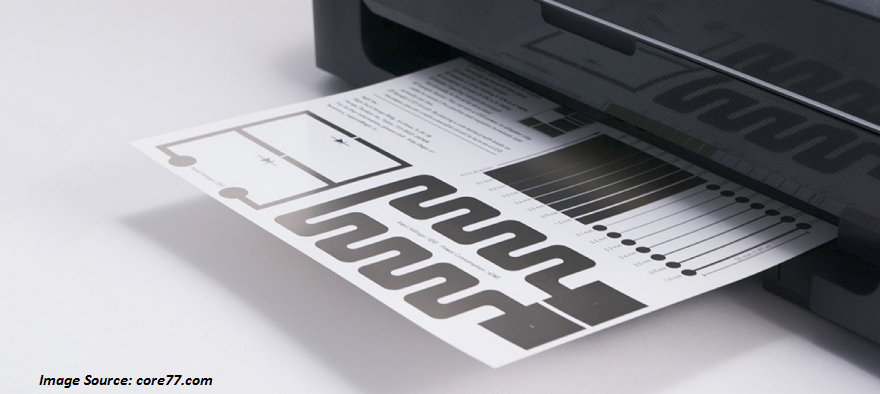Conductive ink is the latest technological invention that allows drawing working circuits on a variety of materials, just like textiles or paper. It essentially incorporates the ability to conduct electricity within the ink so that electricity can pass through the object that is printed with that ink. The ink is usually infused with certain conductive materials that help in electrical conduction.
Of all the materials applied, the most popular variety is the carbon conductive ink, which is primarily used in the field of printing electronics. This is a low-cost, environmentally-friendly formula, which has a lot of potentials and can be used to manufacture PCBs and in other applications as well. Recently, there has been a lot of hype about how these materials might eventually replace traditional circuits.
To assess the possibilities, this article analyzes how the conductive ink works and what are its advantages.
Multiple Purposes of Conductive Ink
All types of conductive inks have numerous application purposes in the industry.
- The silver-infused conductive inks are generally used to print RFID tags that are used nowadays in modern transit tickets. They are also put to good use for repairing circuits on printed circuit boards. They are also used for flexible substrate printing, where they are screen printed on the insulated surface of plastic components to make a conductive circuit.
- The carbon conductive ink is primarily applied for screen printing, gravure printing, flexographic printing, etc. It can also be used for spraying, dipping, or coating. Other than these, it is most commonly implemented in inkjet printing technology. It is also frequently used in medical, automotive, aerospace as well as electronics industries.
- Conductive inks are also used in a variety of cases, like in computer keyboards. They contain membranes with printed circuits that can sense when any key is pressed. They are also included in the resistive traces present in windshield defrosters. The newer variety of cars are also equipped with conductive traces printed on the rear window that acts as a radio antenna.
Advantages of Conductive Ink
There is a myriad of advantages of using conductive ink for several industries. They are explained below:
- Conductive ink is not only a superior but also an economical way of laying down modern conductive traces as compared to traditional industrial standards. Though it is used for a plethora of purposes, it is the most important component as well as the best alternative for printing metallic structures.
- In the initial period, the biggest factor behind its superfast development was its wearable technology and its contributions towards e-textile industries. Nowadays, it is greatly preferred than any other existing traditional solutions because, it is easily customizable, which allows it to cater to a broad spectrum of industry requirements.
- In e-textiles, it is considered to be one of the best options, as it can be added even after the main product has been produced, without interrupting the textile production process. This is possible only because these inks can be laminated and heat transferred. Several ongoing innovations are being made on the use of sacrificial layers.
Conclusion
Conductive ink has become the need of the hour for better performance in many industries. Of all the types available, carbon conductive ink is the most favored because it helps to provide a cost-effective process of applying conductors and resistors to the base materials and ceramics utilizing means of screen-printing. It is good enough to be able to substitute gold and serve as resistors, cross-over conductors or shields.


















